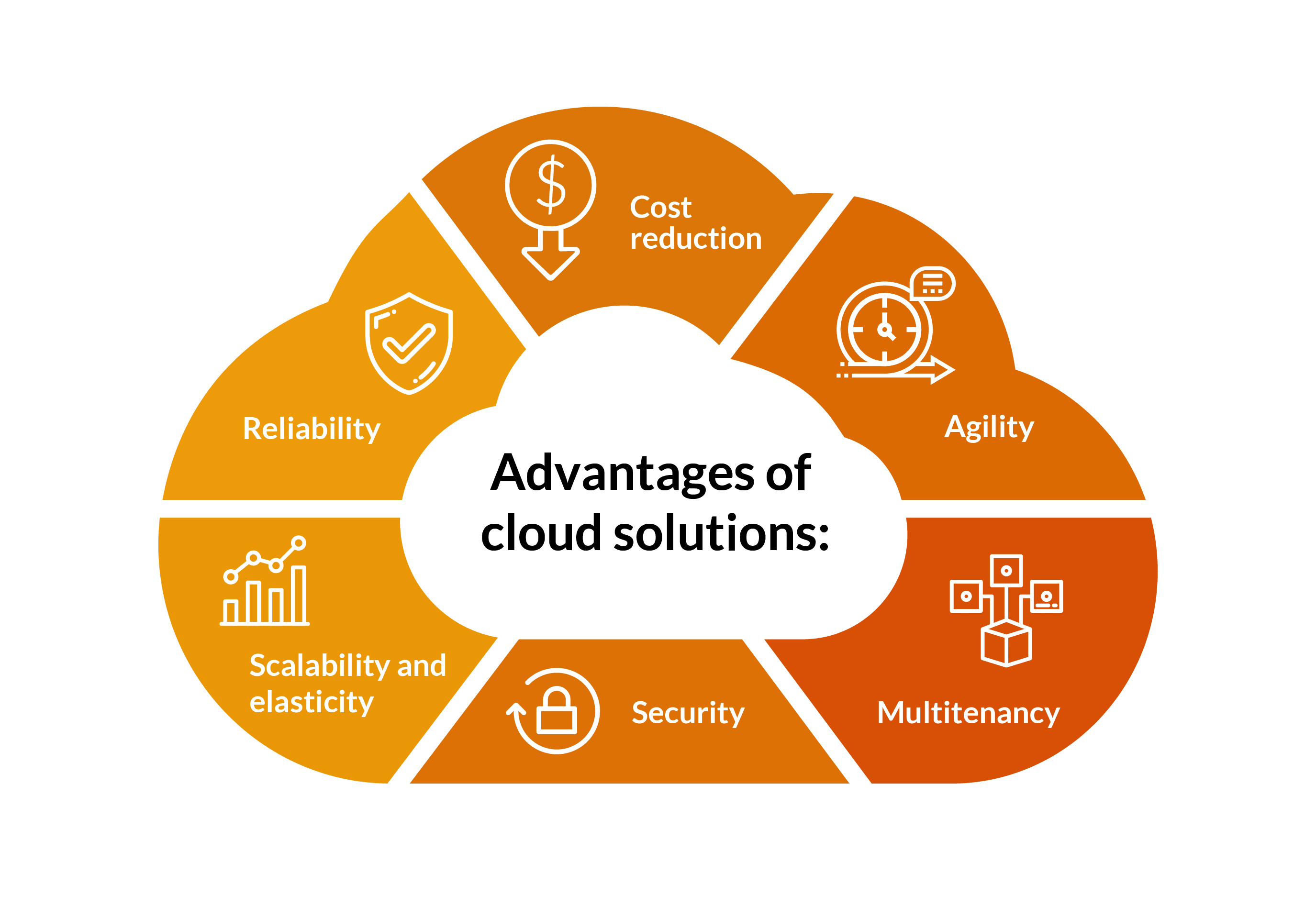Utilizing the Potential of Cloud Solutions for One-upmanship in the marketplace
Advantages of Cloud Solutions

Cost-efficiency is one more significant benefit of cloud services, as firms can prevent big upfront investments in equipment and software. On the whole, the advantages of cost-efficiency, scalability, and versatility make cloud solutions a valuable property for firms looking for a competitive edge in today's dynamic market landscape.
Cloud Movement Strategies
Cloud migration needs meticulous planning and smooth execution to make sure a smooth shift of electronic assets to cloud-based atmospheres. One common approach is the "Raise and Change" approach, where existing systems are moved to the cloud without significant modifications.
Alternatively, the "Replatforming" strategy includes making small changes to applications to enhance their efficiency in the cloud atmosphere. This approach strikes an equilibrium in between rate and optimization, enabling organizations to gain from cloud abilities while lessening disruptions.
For even more facility systems, the "Refactoring" strategy, likewise called "rearchitecting," includes upgrading applications to be cloud-native. While this method calls for more time and sources, it can maximize the advantages of scalability, adaptability, and cost-efficiency that cloud systems offer.
Eventually, selecting the ideal cloud migration technique relies on factors such as the organization's objectives, budget, timeline, and technical demands. By thoroughly evaluating these considerations, organizations can efficiently transition to the cloud and obtain a competitive side on the market.
Enhancing Information Safety And Security Steps
After applying cloud migration approaches, organizations need to prioritize enhancing data safety and security gauges to secure their digital properties effectively. Cloud Services. Information protection is paramount in the electronic age, specifically when leveraging cloud solutions that entail sending and saving delicate information.
Routine safety audits and susceptability analyses are necessary to determine and deal with any weak points in the data security infrastructure immediately. Educating workers on finest techniques for information protection and enforcing rigid access controls can likewise minimize the threat of interior information breaches. By purchasing robust information safety and security steps, organizations can infuse trust amongst their consumers and stakeholders, inevitably gaining an one-upmanship in the market.
Leveraging Cloud for Scalability
Implementing cloud services enables organizations to dynamically readjust resources according to require, enhancing scalability and optimizing operational performance. Scalability in the cloud context refers to the ability to rapidly and quickly read this article rise or lower sources as required, supplying companies with the versatility to fulfill changing requirements.
In addition, leveraging cloud scalability allows organizations to respond without delay to market variations, seasonal needs, or unanticipated development, ensuring uninterrupted service distribution without incurring unneeded expenses. By scaling sources up or down in real-time, organizations can keep ideal efficiency levels while managing costs. Scalable cloud solutions encourage companies to introduce quickly, release new applications effectively, and adjust to progressing business demands with agility. On the whole, accepting cloud scalability is a tactical step that promotes competition and positions organizations for lasting development in today's dynamic market landscape.

Implementing Cloud-Based Cooperation
Partnership in modern-day service atmospheres has actually undertaken a considerable improvement via the assimilation of cloud-based technologies. Cloud-based collaboration devices have revolutionized the means groups work together, using real-time interaction, paper sharing, and project management capabilities no matter of physical place. By applying cloud-based partnership services, companies can enhance efficiency, increase performance, and improve operations.
Among the vital advantages of cloud-based collaboration her latest blog is its capacity to break down interaction barriers among group participants. With functions like immediate messaging, video clip conferencing, and online white boards, staff members can team up perfectly and remain linked regardless of where they lie. In addition, cloud-based partnership devices promote easy accessibility to shared resources and papers, enabling employee to interact on projects in a synchronous way.
Furthermore, cloud-based partnership promotes adaptability and agility within companies by making it possible for remote work and fostering cross-functional team effort. click to find out more Workers can collaborate in real-time, share feedback quickly, and choose collectively, causing quicker improved and analytical development. Generally, carrying out cloud-based collaboration is important for contemporary services aiming to stay competitive in today's hectic and interconnected market landscape.
Verdict
To conclude, the usage of cloud services offers various advantages for organizations looking for an one-upmanship out there. By implementing cloud migration strategies, improving data safety steps, leveraging scalability, and making use of cloud-based partnership, organizations can boost effectiveness, decrease prices, and remain ahead of the competitors. Accepting the capacity of cloud services is essential for companies seeking to succeed in today's rapidly progressing organization landscape.
The ability to harness the capacity of cloud solutions supplies companies countless benefits, from increased agility and scalability to improved partnership and information protection. As organizations browse the intricacies of cloud movement and explore innovative ways to take advantage of cloud innovation, the inquiry emerges: Just how can businesses successfully utilize cloud services to not only keep up with but also exceed their rivals in the dynamic market?
Furthermore, the versatility supplied by cloud solutions permits companies to accessibility data and applications from anywhere, promoting remote job and partnership amongst teams found in different geographical locations. - universal cloud Service
By implementing cloud migration approaches, enhancing information safety and security steps, leveraging scalability, and using cloud-based partnership, services can improve effectiveness, minimize expenses, and stay ahead of the competitors. Embracing the possibility of cloud solutions is crucial for organizations looking to succeed in today's rapidly developing company landscape.